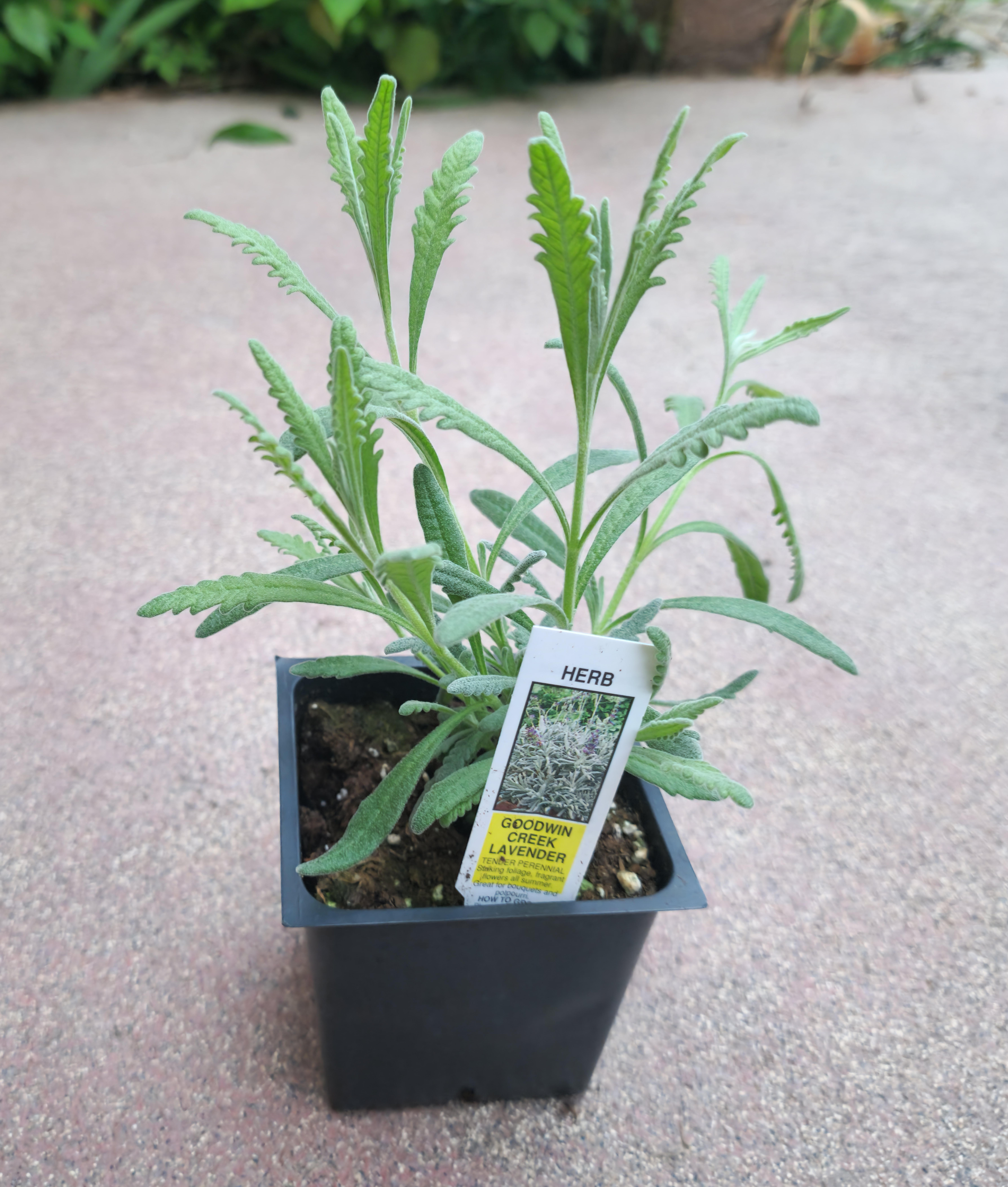
Harvest Time
150 days
Difficulty
moderate
Growing Methods
Container
Raised Bed
USDA Hardiness Zones
6
7
8
9
10
About Goodwin Creek Lavender
Goodwin Creek Lavender is a versatile hybrid cultivar featuring striking silver-grey foliage with finely toothed edges and long, slender dark violet-blue flower spikes. This robust perennial forms a dense mound reaching 20-24 inches tall without flowers and 30-36 inches when in bloom. With exceptional heat and drought tolerance, this variety adapts better to indoor growing and humid environments than most lavenders. Its attractive appearance and adaptability make it ideal for containers, borders, and aromatic gardens. The plant offers year-round visual interest with its distinctive silver-gray foliage even when not in bloom.
General Care Instructions
Sunlight Requirements
- • Requires 6-8 hours of direct sunlight for optimal growth and flavor
- • Tolerates partial shade (4-6 hours of direct sun)
- • Morning sun with afternoon shade works well in hot climates
- • Insufficient light leads to leggy growth and reduced essential oils
Temperature Range
- • Ideal growing temperature range: 70-90°F (21-32°C)
- • Protect from temperatures below 50°F (10°C)
- • Will suffer damage or die when exposed to frost
- • Growth slows below 60°F (15°C) and above 95°F (35°C)
- • Optimal soil temperature for germination: 70-85°F (21-29°C)
Fertilizer Requirements
- • Container plants: Half-strength balanced liquid fertilizer every 2-3 weeks
- • Garden plants: Balanced organic fertilizer monthly
- • Begin fertilizing when plants are 4-6 inches tall
- • Reduce feeding in late season to prevent excessive leaf growth
- • Signs of deficiency: yellowing leaves, stunted growth, pale foliage
- • Avoid high-nitrogen fertilizers which reduce essential oil content
Watering Needs
Newly planted
- • Keep soil consistently moist but not soggy
- • Water when top half-inch of soil feels dry
- • Avoid overhead watering to prevent disease
Establishing plants
- • Container plants: Check daily; water when top inch of soil is dry
- • Garden/raised beds: Deep watering 1-2 times weekly
- • More frequent watering during hot, dry periods
Established plants
- • Continue consistent moisture for best flavor
- • Reduce watering slightly during cooler weather
- • Never allow soil to completely dry out